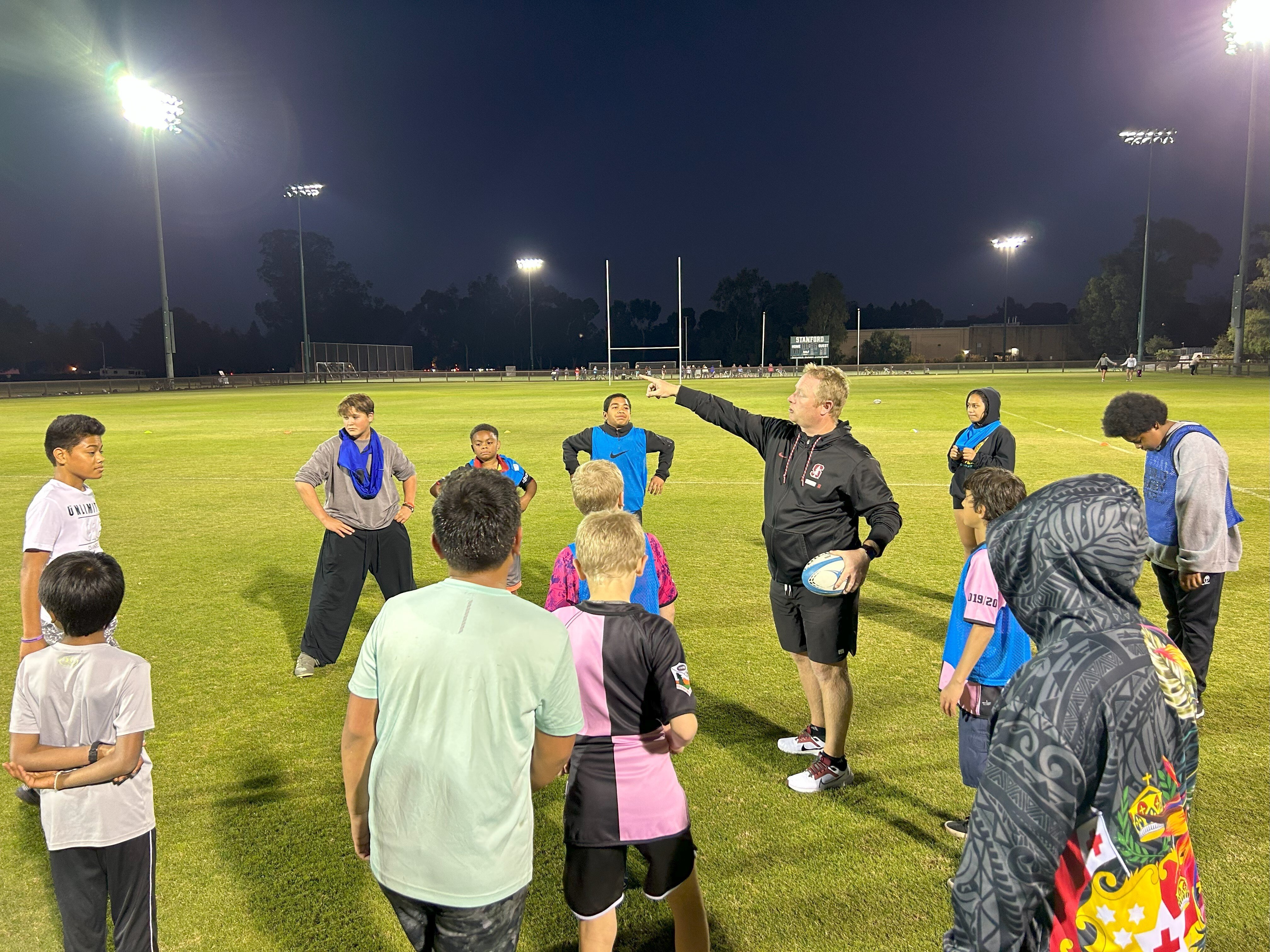“First one there is a rotten egg!” chanted a kid running up the bleachers to the rugby clubhouse. “Last one there doesn’t get pizza!” shouted another.
These two are among a few dozen middle school students celebrating the final session of Rugby & Reading, a weekly program started by Stanford Rugby director and head coach Richard Ashfield. The initiative began last quarter and ran for six weeks, combining co-ed rugby coaching and homework help. It is free for all students.
Ashfield was inspired to create Rugby & Reading by a friend at Boston University whose Skate & Read program partners ice hockey and the local library.
“We have such wonderful facilities and great students; how can we share that with the local community?” Ashfield said.
He began planning in partnership with Camp Cardinal, which runs youth sports camps on campus, and reached out to friends in the youth rugby network.
“Once we got the green light, it moved very fast,” Ashfield said. “The rugby community is a pretty small network. We all know each other or know someone who knows someone, so we were able to spread the word pretty quickly, pretty far away.”
This year, the program hosted 18 kids from the Bay Area, with some coming from as far as Gilroy. While many already play rugby on club teams, some are local kids trying the sport for the first time.
A typical session begins with around an hour of non-contact rugby practice led by Ashfield, assistant coach Irene Gardner and four volunteer Stanford student coaches. To suit the athletes’ range of experience, they focus on teaching the fundamentals.
“It’s like herding cats sometimes,” Ashfield said. “We have to keep it fun. We can’t get super technical.”
The program also aims to help build community in the U.S.’ rugby scene.
“It’s a really great opportunity for them to be able to meet other middle schoolers in the area that might also play the sport,” said Gardner, who previously competed for the USA Rugby National Team. “Now they might end up playing against each other, and they’ll see a familiar face.”
After practice, the crew heads up to the rugby team’s comfortable clubhouse. Spreading out across the clubhouse’s couches or seated around its large, wooden table, the kids can work on homework with student coaches ready to lend a hand.
“They get help from our students because the math was way over my head,” Ashfield joked.
Brianna Gamble ’24, who joined the Stanford women’s club rugby team last year, is one of the students who was up to the task.
“I honestly found coming here really a relaxing part of my day,” Gamble said. “It’s a chance to forget that I have an assignment due at 11:59 and just come out, play with the kids and just have that time to give back.”
Ben Pahulu brought his son and nephew to the camp “so they could not only continue to grow in the game of rugby, but just to be here on campus and be around students.”
The student coaches are “positive role models,” Pahulu said, showing the younger participants how to “balance out their academics and their sports.”
The kids have “taken a liking to them a great deal,” Pahulu added.
Despite the weekly commitment, Ashfield said he didn’t have a hard time finding student volunteers. Though he was only looking for two students from the men’s and women’s teams this session, he said he “could have had easily five from each team.”
Ashfield has also provided Rugby & Reading participants with opportunities off the field, including an indoor practice at Ford Center and free tickets to the Big Game. He also tries to give away merchandise at the end of each practice; after the last session, each student received a Stanford rugby ball.
Though the program had limited space in their first year, they hope to expand in future sessions.
“Creating access to more rugby for youth is an essential part of growing the game,” Gardner said.
She stressed the advantages of starting early and the growing opportunities for college rugby scholarships, especially for women. She proposed increasing future outreach to schools, instead of just the majority-male youth rugby clubs, in order to increase the number of girls in the program. That would mean taking on more first-time athletes, but the coaches are ready for the challenge.
“I think it’s a pretty small outline for what I think has been a really big, successful program,” Ashfield said. “The start of something.”
